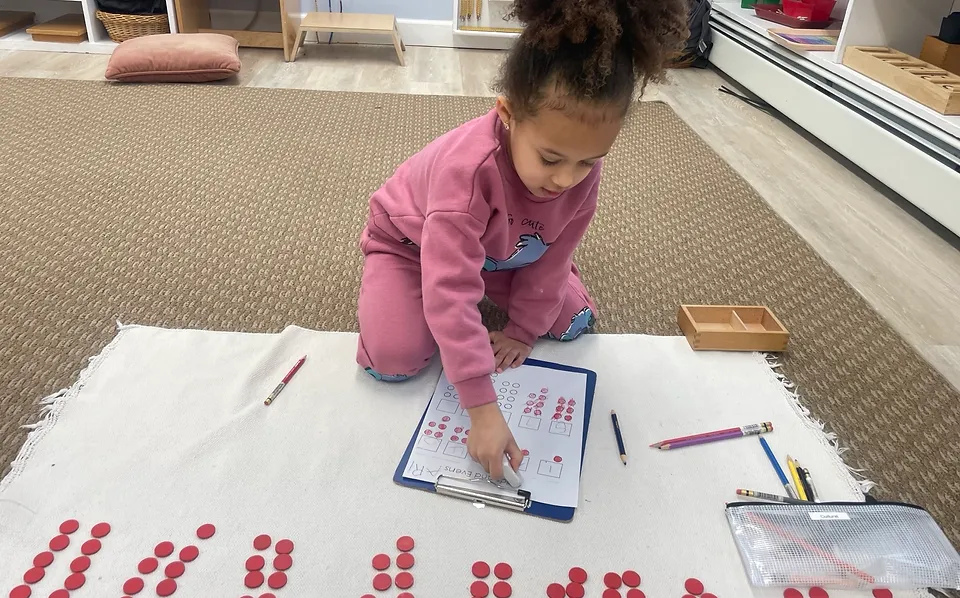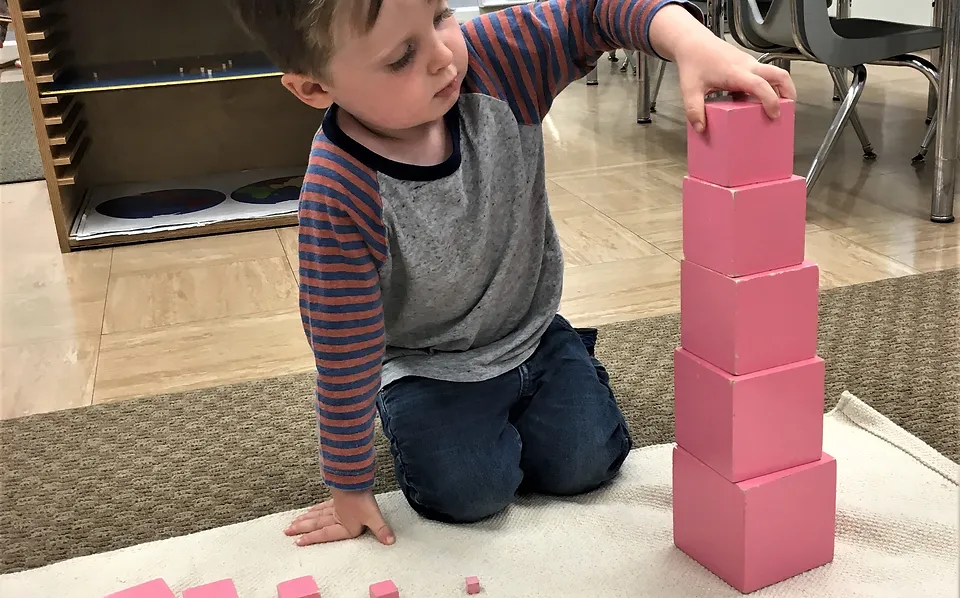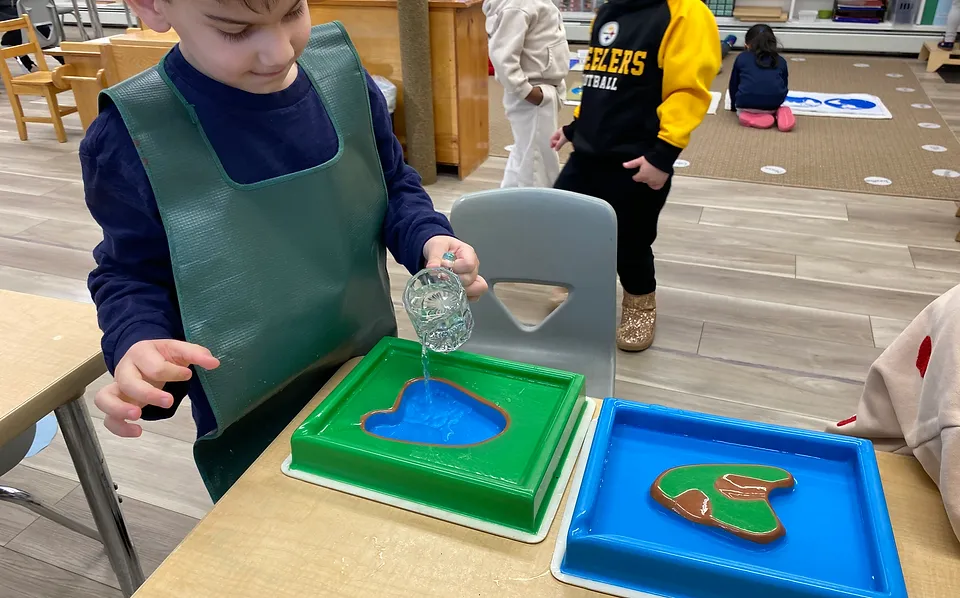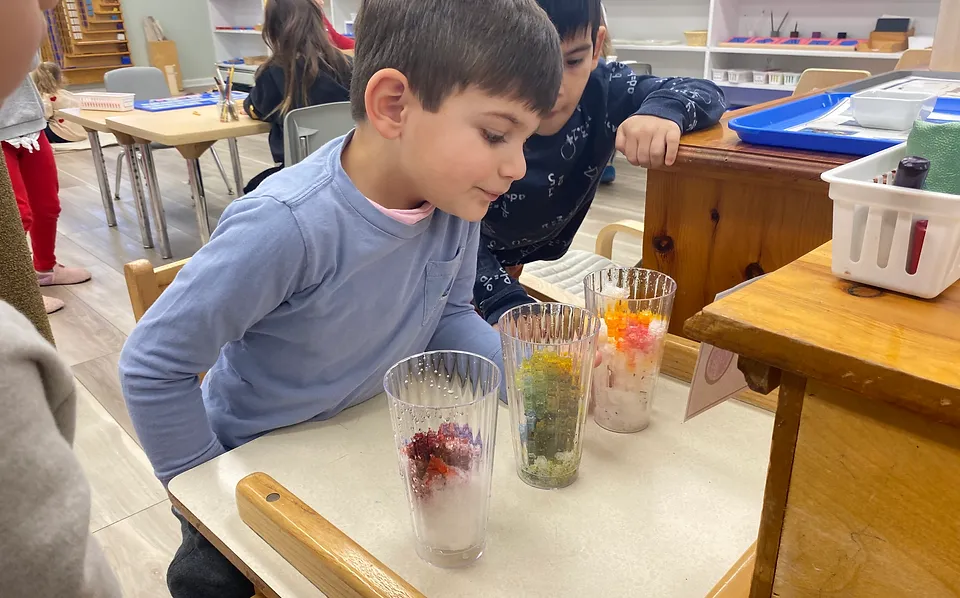Montessori Method
The Montessori Method of education was developed by Dr. Maria Montessori over a century ago. The Montessori Method revolutionized the field of early childhood education by insisting that environments in which children learn reflect children’s natural development, from the construction of the chairs and tables children use to the pace and type of activities in which they engage. While Dr. Montessori’s original conclusions were based on empiric observation, research throughout the last century demonstrates the deep and lasting positive effects of her method, from increased academic achievement to distinctions in children’s creativity, self-efficacy, and community contributions.
Some qualities you will observe in a Montessori environment include:
- NMultiage classrooms within which younger and older children are both learners and mentors
- NIndividually tailored curricula based on the observation of each child
- NHighly-prepared, professional teachers
- NCooperative, peaceful environments
- NThoughtfully-sequenced activities in a wide variety of fields and at multiple levels of challenge so each child is able to learn and grow
- NWarm, homelike settings that model collaboration and instill a sense of responsibility to each other and to the community.

Practical Life
Practical Life incorporates care of self, care of the environment, care of others and lessons in grace and courtesy lessons. Through hands-on activities, children grow in their ability to concentrate, in their sense of order, in their ability to coordinate their movements and in their independence.
The Practical Life area may include activities such as pouring, using tongs, folding napkins, washing tables, polishing silver, feeding classroom pets, dressing oneself and preparing snack.
Sensorial
The Sensorial materials include activities designed to refine and enhance the child’s blossoming sensory awareness. Modern research is proving that the senses, seeing, hearing, touching, tasting and smelling, help the brain to learn and discriminate. Montessori materials are designed to offer opportunities for children to identify size, height, length, colors, shapes and patterning. Our classrooms also include materials designed to enhance the child’s stereognostic sense, that ability to identify an object by holding it in one’s hand.
“The hands are the instruments of man’s intelligence.”
– Maria Montessori


Mathematics
Like concepts presented throughout the Montessori classroom, even those more abstract concepts of mathematics have been made concrete for the children in our classrooms. Beginning with simple number concepts like understanding quantity and identifying numerals, the math materials include advanced presentations in cubing numbers, factors, fractions, and mathematical operations.
Language
From early experiences with a richly verbal environment to the more advanced grammar and structure lessons, the Montessori child benefits from an environment within which language is both practical and poetic.
Reading is taught by a well-tested phonetic approach that begins as soon as a child enters our program. Writing skills develop through the use of the Moveable Alphabet, and expand to children’s journalling, story-writing and creative expression.
Montessori classrooms are filled with joyous language, as children share their discoveries with each other, learning and developing new skills in a comfortable community of peers.


Cultural Studies
Children are naturally interested in the world around them, and the cultural materials make available that entire world. These may include lessons in botany, geography, anatomy or zoology. Children may investigate pictures of children from around the world and identify their homes on maps. They may learn the names of leaves and trees around our campus and classify those into their genus and species. They may prepare and taste foods from around the world, learn cultural dances or begin to identify countries’ flags.
The cultural materials include activities such as the World Puzzle Maps, through which children identify continents and countries around the world, and the solar system, through which children begin to understand the magnitude of the universe. Children may experiment with chemical reactions or care for seedlings until they are able to be planted in the garden.
The Cultural materials ground children in a sense of the interconnectedness of life and secure in the child a sense of stewardship for the Earth and all its inhabitants.
